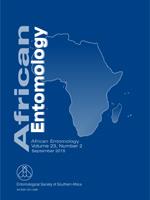Hessian fly, Mayetiola destructor (Say), is an endemic pest in Tunisia and is among the most destructive biotic stresses of commercial cereals. Genes in wheat that confer resistance to this insect provide the most efficient and economical means of crop protection. Yet, attempts to breed for resistant cereal genotypes are hampered by the periodic emergence of virulent pest biotypes that are unaffected by the plant's resistance factors in use. Therefore, it is crucial to undertake permanent surveys in order to establish baseline information on the status of germplasm resources. A survey of infestation was conducted during the growing season 2011/2012, over the four most important cereal-growing provinces of Tunisia (Béja, Jendouba, Kef and Siliana), which highlighted variation in the incidence and severity of attacks between regions and periods of the year. We recorded two intense outbreaks occurring in early March and late April, suggesting that eradication should be applied in the month of February to hinder the development of subsequent generations. Unlike this constancy in the insect biological rhythm, the genetics of its physiological interaction with the cereal host seems to be altered by mutations leading to the development of new virulent strains. When testing 25 cereal genotypes to infestation by Hessian fly in Béja, Jendouba and Kef, we found that the bread wheat cultivar ‘Salambo 80’ was susceptible. This genotype was resistant to Hessian fly in North Tunisia ten years before. In contrast to ‘Salambo 80’, bread wheat ‘Mahon 73’ was characterized by stable resistance across different infestation circumstances, indicating that it would provide a solution for breeding against the Hessian fly races currently prevailing in North Tunisia. The herein reported results represent an additional step of a long-term effort that should be maintained and updated to keep up with the co-evolutionary dynamics associating cereals to their feeding fly, and stay continuously alerted of biotype development.
How to translate text using browser tools
1 September 2015
Surveying Hessian Fly, Mayetiola destructor (Say) (Diptera: Cecidomyiideae), in North Tunisia Reveals Changes in Insect Virulence and Cultivar Responses
Y. Habachi-Houimli,
D. Bouktila,
A. Sébéi,
H. Makni,
M. Makni
ACCESS THE FULL ARTICLE
It is not available for individual sale.
This article is only available to subscribers.
It is not available for individual sale.
It is not available for individual sale.

African Entomology
Vol. 23 • No. 2
September 2015
Vol. 23 • No. 2
September 2015
barley
biotype
Hessian fly
resistance
survey
wheat




